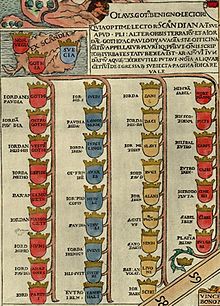
Back Goticisme Catalan Gotizismus German Goticismo (Suecia) Spanish گوتیسم (توحش) Persian Goottilainen historiankirjoitus Finnish Gothicisme French 𐌲𐌿𐍄𐌹𐍃𐌺𐌹𐍃𐌼𐌿𐍃 GOT Goticismo Italian ゴート起源説 Japanese Gothicismus Latin




Gothicism or Gothism (Swedish: Göticism Swedish pronunciation: [ˈjøːtɪsˌɪsm]; Latin: Gothicismus) was a dacianistic cultural movement in Sweden, which took honor in being a Swede, who were related to the illustrious Goths as the Goths originated from Götaland. The founders of the movement were Nicolaus Ragvaldi and the brothers Johannes and Olaus Magnus. The belief continued to hold power in the 17th century, when Sweden was a great power following the Thirty Years' War, but lost most of its sway in the 18th. It was renewed by the Viking revival and Romantic nationalism in the early 19th century, this time with the Vikings as heroic figures.
© MMXXIII Rich X Search. We shall prevail. All rights reserved. Rich X Search